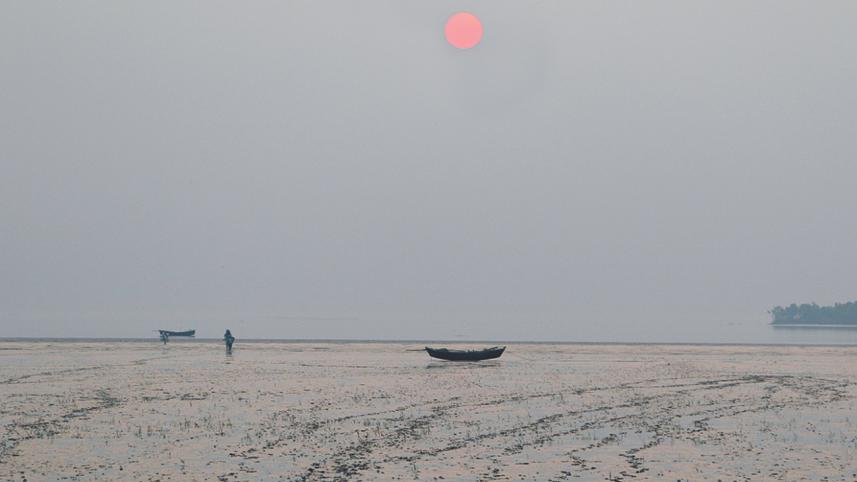Nijhum Dreams

Five days after returning from Nijhum Dwip, what I remember most is the quality of the light. Intensified by the reflection of the sea and water everywhere but diluted by the ever-present moisture and fog, thick or thin, it had its own dreamlike quality, illuminating close objects crystal clear and larger than life while sending far away objects even farther, blurred by the haze.
I also remember the audacity of her people. Having to struggle against the elements, their sun-burned, leathery faces told so many stories: of the storms they had faced, of the intense heat of the summer and the drenching of the monsoon, of braving the sea every day in their small boats to set up their nets and then waiting patiently for their catch.
I remember the dependence on the tide, which, like clockwork twice a day, governed the lives of people here. The tide dictated when you can arrive and when you can leave. If you embark a boat while the tide is receding you have to move quickly to avoid being stuck on the mud. And those boats looking funny parked on the sand? They are waiting for the tide to take them home.
I remember the intense smell of small prawns in Namar Bazar, piles of them drying in the sun on platforms right in the middle of the street. The same prawns, served sautéed with onions at the jhupri restaurant where we ate our meals, were delicious like nothing else we had eaten.
I remember the trees. The gorgeous mangrove keora trees, forests of them towering 40 feet or higher, bottoms neatly pruned to the height that a deer can reach to eat the leaves standing on its hind legs. And juvenile ones, perhaps only ten feet tall, growing in the middle of ponds and dobas like self-contained islands with their own mangrove roots shooting up in a circle around them. And not a jackfruit tree in sight because they cannot survive submersion.
I remember the mud, so fine, the colour of rust and ash. This is the silt carried hundreds of miles from higher lands by the mighty rivers of the delta that accumulated under the ocean before raising its mighty head. It sits peacefully at last, while birds play in it and crabs run busy errands. But it did not welcome my feet which sunk in it, and it stuck to me as I tried to wash it off.
I remember the firewood store, with lakri neatly laid out in rows of a tall shelf with square boxes, and the fish net store, which had a hundred intricate items related to fishing and fishing nets. Smart storekeepers always know the priority of their customers.
I remember the hotel, Nijhum Resort, clean and welcoming, with a hard-working and friendly staff. Ritz-Carlton, eat your heart out.
I remember the birds, of course. The black and white flocks of pied avocets with scuttling about with their head in the mud, the Indian skimmers with orange-red beaks with a long lower mandible to catch fish while skimming the water, and the myriads of waders in the mudflats.
Nijhum Dwip in the Bay of Bengal is a remote southern outpost of Bangladesh. The char emerged from the ocean in the 1950s. Bangladeshis have settled it slowly but steadily, with about 30,000 people inhabiting its 22 square miles.
Can you re-visit dreams? I sure plan to return to Nijhum Dwip.
facebook.com/tangents.ikabir



 For all latest news, follow The Daily Star's Google News channel.
For all latest news, follow The Daily Star's Google News channel.
Comments